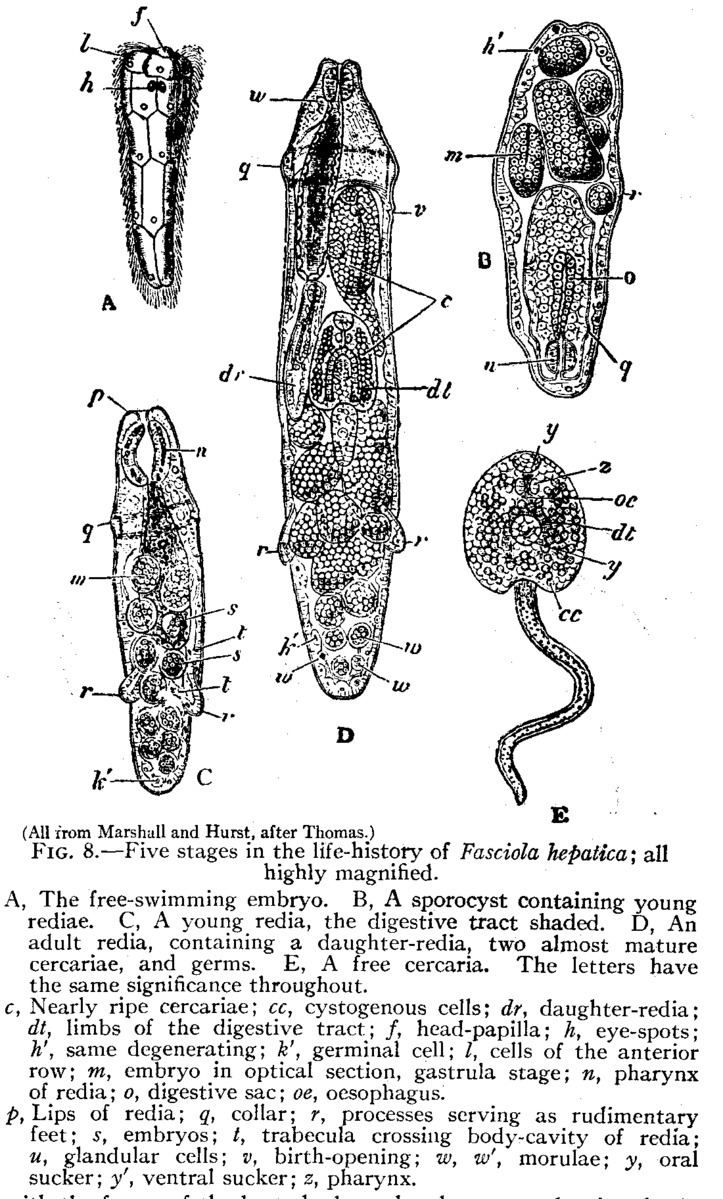 | ||
Trematodes or flukes are small parasitic flatworms that use vertebrates as their definitive host, and molluscs (usually freshwater snails or land snails) as their intermediate host. To accomplish this, they have several varied life cycle stages.
Contents
The life cycle of a typical digenean trematode can be thought to begin when its egg is immersed in water. Following this, a miracidium hatches, which swims to find a mollusc host. The miracidia go through several stages in the mollusc host, eventually emerging as motile cercarial larvae. The cercaria either infects vertebrates through the skin or is ingested. In its vertebrate host, the cercaria matures to an adult form, the fluke, and lays eggs that are discharged with the host feces or urine. In the presence of open water, the eggs hatch and the miracidium stage of life is reached again.
Typical life cycle stages
While the details vary with each species, the general life cycle stages are:
Deviations from the typical life cycle
Not all trematodes follow the typical sequence of eggs, miracidia, sporocysts, rediae, cercariae, and adults. In some species, the redial stage is omitted, and sporocysts produce cercariae. In some species, the cercaria develops into an adult within the same host.
Many digenean trematodes require two hosts, one (typically a snail) where asexual reproduction occurs in sporocysts, the other a vertebrate (typically a fish) where the adult form engages in sexual reproduction to produce eggs. In some species (for example Ribeiroia) the cercaria encysts, and waits until the host is eaten by a third host, in whose gut it emerges and develops into an adult.
Most trematodes are hermaphroditic, but members of the family Schistosomatidae are dioecious. Males are shorter and stouter than the females.
